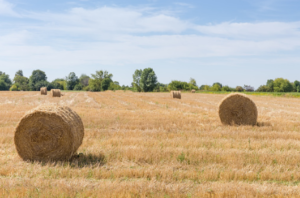Silage wrap is a critical component of hay production. It helps prevent hay from moulding or losing nutrients during the harvest and storage. It is especially important for hay producers transporting their bales over long distances.
The two main methods for wrapping hay are tube and single-bale wrapping. Each has its pros and cons. For more information about the silage wrap price 2023, click here.
Price
Silage wrap is a type of film used to wrap hay or silage bales. It provides an oxygen barrier and encourages the fermentation process. It also protects the hay from weather and other factors that could ruin its quality. Made from premium metallocene polyethylene, it has excellent puncture and tear resistance. It runs well on Paddock machinery and can be used with various bale wrapping machines.
Bales of hay or straw must be tightly wrapped to prevent moisture and other environmental factors from damaging the crop. Good-quality netwrap reduces losses and enables producers to keep their harvest. It also helps to ensure that the hay or straw remains intact during transport and storage. In addition, it also helps to protect the hay from mould and other pests.
Quality
Choosing a quality silage wrap is vital to preserving and storing hay. It can help you save on feeding costs and reduce harvest losses. Its cling barrier keeps forage fresh while preventing the penetration of oxygen, which can result in spoiled feed and poor livestock health.
Silage wrap is also essential for the proper fermentation of hay. A well-sealed bale prevents air from entering and allows for a controlled environment and suitable heat buildup. It translates into better dairy and meat products.
 A top-quality silage bale wrap roll will have a consistent thickness, high tear resistance, and optimal UV protection. It should also be easy to apply and stick to itself for a secure seal. It should be compatible with your baler and last 12-24 months, depending on the outdoor conditions.
A top-quality silage bale wrap roll will have a consistent thickness, high tear resistance, and optimal UV protection. It should also be easy to apply and stick to itself for a secure seal. It should be compatible with your baler and last 12-24 months, depending on the outdoor conditions.
Appearance
The appearance of silage wrap can make a big difference to farmers/ranchers. Bales that are uncovered and exposed to weather elements tend to spoil quickly. It can result in farmers tossing out bales they could have profited from. Silage wraps are designed to keep hay and other fodder fresh for longer, saving farmers money in the long run.
The global bale wrapper market is a rapidly growing industry that involves wrapping bales of hay or silage in a protective layer of plastic film. The agricultural sector’s need for efficient hay and silage preservation methods drives the industry. It also helps reduce waste and preserve the nutritional value of the fodder. The industry is segmented by type, application, and region.
Durability
If your silage wrap gets damaged during storage, it could compromise the anaerobic conditions and spoil the feed. That is why choosing a durable wrap with puncture-resistant properties is essential. It also helps to select the correct colour based on your climate, with darker wraps absorbing more heat and lighter wraps reflecting sunlight.
There are two popular methods of wrapping silage bales: tube and single-bale. Each has its pros and cons, but both can produce quality silage. For example, tube wrapping can save time and plastic waste compared to single-bale wrapping, but it can have less airtight seal. In addition, Coblentz’s research shows that a delay of more than 24 hours between baling and wrapping can decrease the forage’s dry matter intake and digestibility.
Safety
Silage wrap is vital for preserving hay or straw bales and keeping them safe from external elements. It helps to maintain the quality and nutritional value of the crop, which will then be used for livestock feed later. It can also help to reduce the amount of waste that ends up in landfills.
Bales should be wrapped as soon as possible, ideally on the same day. Cutting too wet may produce butyric acid and spoil—similarly, too dry baling results in increased air content and mouldy hay.